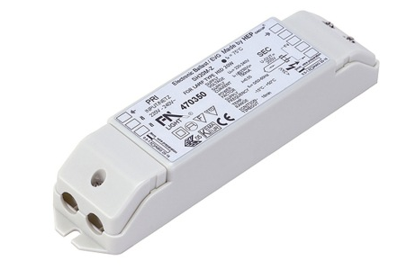ballast
Ballasts(VG) are current-limiting devices that serve to limit the current in gas discharge lamps. Since the current in gas discharge lamps rises constantly due to ionization, it is limited in its rise by the ballast, which essentially consists of a choke. LED luminaires also operate with ballasts called LED drivers, which ensure the correct operating voltage and current.
In the case of ballasts, a distinction is made between conventional ballasts (CCG), electronic ballasts ( EB) and low- loss ballasts (LLB) depending on the design.
Conventional ballasts (CCG) are current-compensating reactors connected in series to the gas discharge lamp. They are designed for the mains frequency and limit the current to the lamp's operating current. In the case of fluorescent lamps, the ballasts also contain the starter, which provides preheating for the incandescent cathodes. Since the inductance of the limiting reactor is an inductive load and causes a phase shift, a capacitor is connected in parallel to compensate. Conventional ballasts cause heat loss due to eddy currents, which can be between 10% and 20%.
Electronic ballasts (EBs) operate at frequencies of 35 kHz to 40 kHz and therefore have a much higher efficiency. In addition, the high frequency avoids flicker effects. In the case of ECG devices, a distinction is made between ECG ballasts for warm and cold starts. In the case of warm-start devices, the incandescent cathodes are briefly preheated so that they emit electrons. In cold-start devices, ionization takes place at a high voltage of about 1,000 V.

